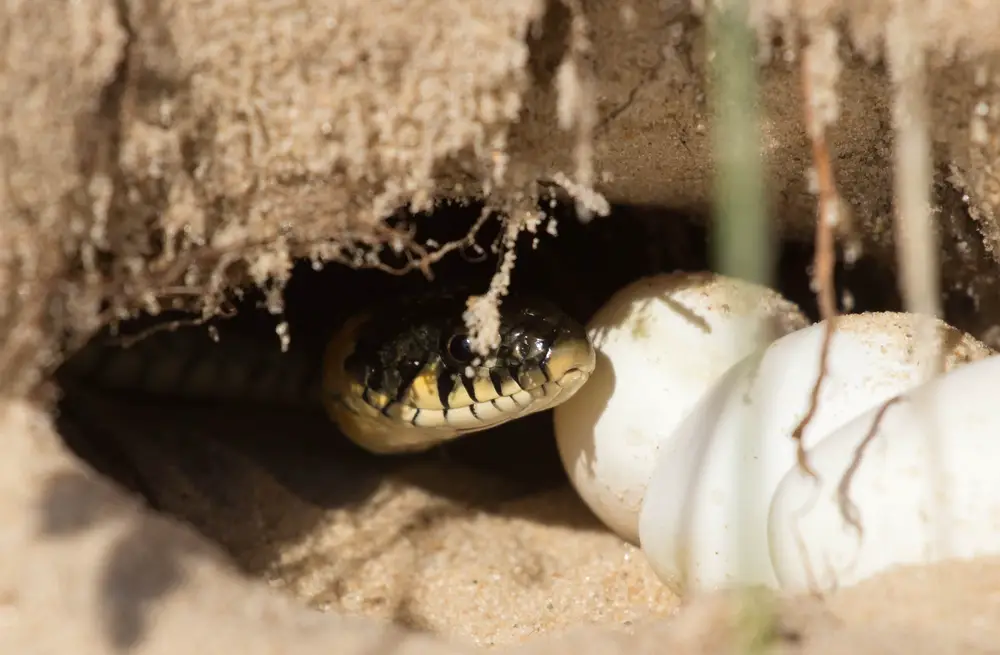How do egg-laying snakes survive in cold places like the UK and Scandinavia, when their eggs need warmth? Let’s take a look at Grass Snake eggs to find out…
The Grass snakes, also known as ringed snakes, are native to Britain, Scandinavia, mainland Europe, the Iberian peninsula, North Africa, the Middle East and Asia. These regions all get either very cold or very dry, which means female Grass Snakes must go to great lengths to find a suitable nest site.
To date, there are three recognised species of Grass Snake, which live in different regions:
| Species | Region |
| Common Grass Snake (Natrix natrix) | Scandinavia, Europe east of France and Italy, the Middle East, central Asia |
| Barred Grass Snake (Natrix helvetica) | UK, France, Netherlands and Belgium, Switzerland, Italy |
| Iberian Grass Snake (Natrix astreptophora) | The Iberian Peninsula and North Africa |
How can snake eggs survive the cold?
In the UK and Scandinavia, it is simply too cold to incubate most snake eggs any old place. But Grass Snakes still thrive there. In fact, I’ve found Grass Snakes over 3 feet (1M) in length. So how do they do it?
Well, to put it simply, gravid female Grass Snakes wander around until they find decomposing plant matter, such as a compost heap.
Decomposing plant matter naturally lets off heat, meaning a compost heap is a perfect incubator for snake eggs. In Scandinavia, you might even find several females laying in the same compost heap.
In southern parts of their range, Grass Snakes deal with dry summers rather than cool ones, but still use a similar tactic for their eggs. They seek out piles of rotting vegetation or rotting logs to guarantee that their clutches won’t dry out.
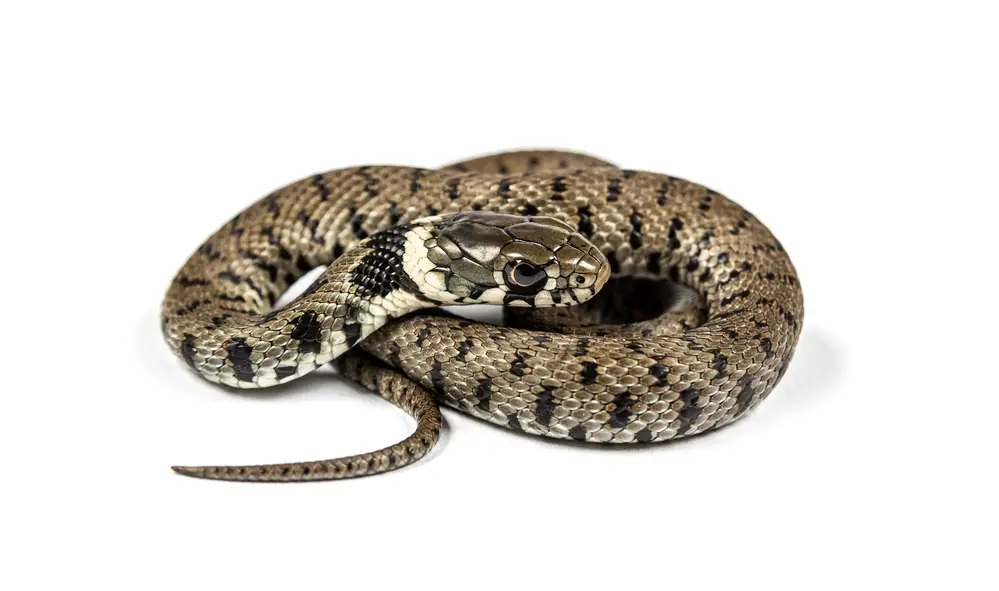
Grass snake eggs size
Female grass snakes lay eggs in the month of June or July. They lay anywhere from 10-40 white leathery eggs which are about 25-30 mm in size, maximum 50mm. Older, heavier females tend to lay larger eggs.
Generally speaking, baby Grass Snakes are around 15-18cm in length and hatch from late August to early October. This varies according to the weather, though.
In some parts of their range, the hatchlings go into brumation (hibernation) almost straight after hatching, then start feeding in the spring.
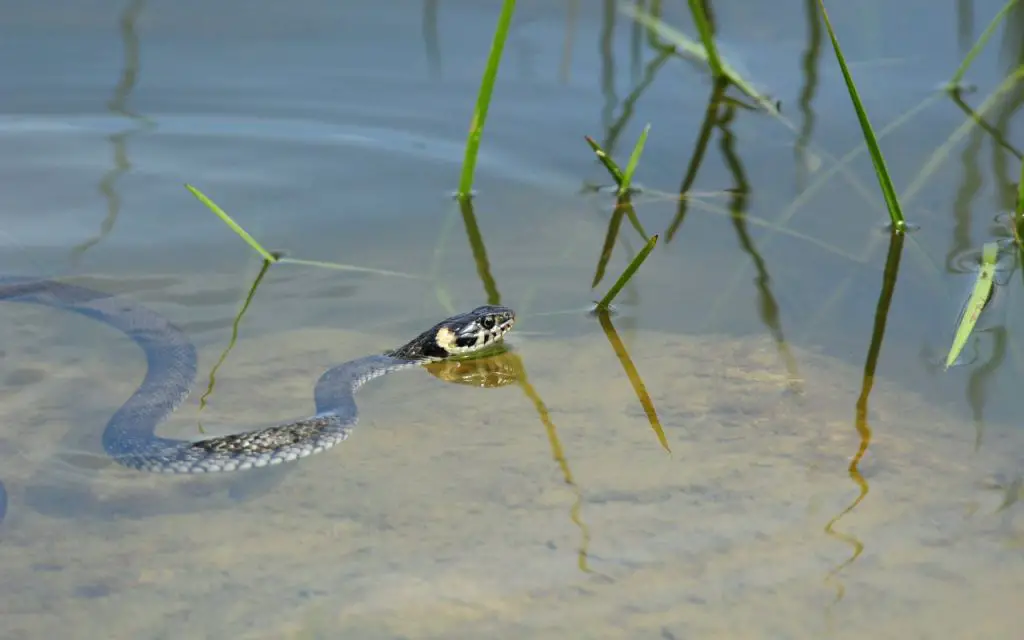
What is the size of a grass snake egg? (variation)
Snake eggs have an oblong shape which allows them to fit in the females body cavity. As a slender group of snakes, Natrix species don’t have room for spherical eggs insider their bodies . In general, the size range of grass snake eggs is around one to two inches, or 25-50mm.
That said, it’s not common to see eggs two inches in size anymore. Over the last 50 to 60 years big Grass Snakes have gotten less common. This is probably due to loss of habitat and persecution by humans.
There are plenty of old reports of them reaching almost 5ft (1.5m) in length, but these days it’s rare to see one over 3.5 feet.

How do you identify snake eggs?
Snake eggs are usually oblong in shape. We can identify snake eggs by understanding some their characteristics like,
- Shape – generally oblong
- Hardness – always leathery and soft
- Appearance – smooth, clean white color
Most snakes that are native to North and South America will lay eggs that are shaped similarly to a bird’s eggs. Additionally, in Africa and Asia, some snakes lay eggs that look bumpy like a ginger root and some may even look like a very thick grain of rice. This is only a few species, though.
Throughout most parts of the world, almost all snake eggs look quite similar to one another and it becomes difficult to identify which snake species the eggs belong to.
Therefore, it is advisable to contact and connect with a local snake expert that can guide you if you find some. If you find a snake egg near you, do not pick it up or move it. Turning a snake over is thought to harm the developing embryo.
To learn more about eggs, check out my article on Lizard Eggs VS Snake Eggs.
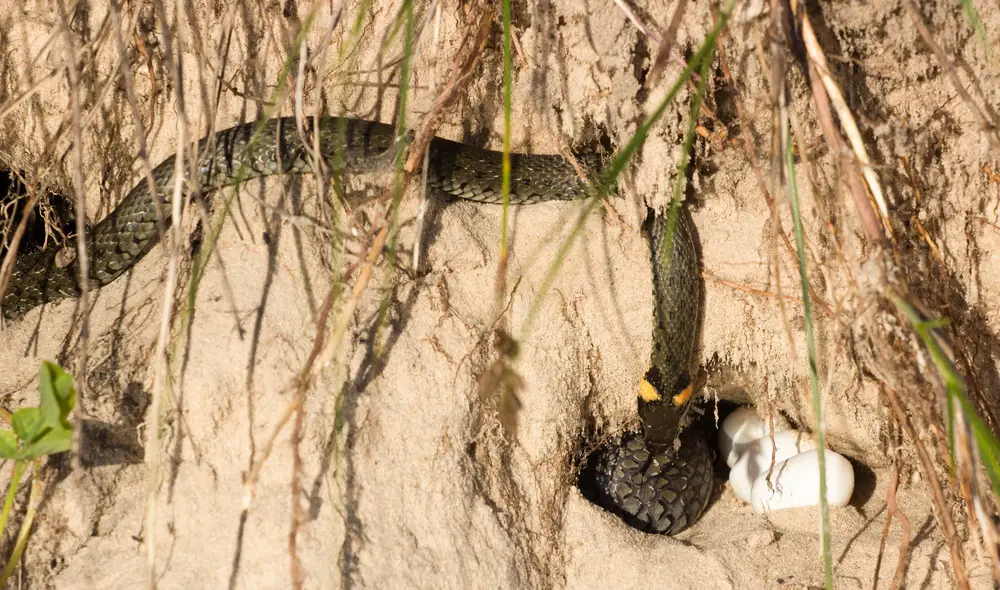
When do grass snake eggs hatch?
The hatching season of grass snakes is usually in the months of August to October. The mother snake lays eggs in rotting vegetation like garden compost heaps which act as an incubator.
That said, weather still has an effect on hatching dates, meaning there is significant variation in when the babies hatch from year to year and region to region.
Like other species, Grass Snakes have an egg tooth, which they use to slice through the shell when ready. Shortly after it drops off, then they rest and digest their yolk before shedding their skin about a week later.
Grass snake eggs hatching
Like most snakes, the eggs of Grass Snakes will give you some clues when they’re about to hatch. The main one is that they collapse about a week beforehand.
You’ll notice their shells are denting inwards, and they will also feel very soft to the touch, like they aren’t quite full. As long as they have been kept somewhere humid enough, this is a good indicator that the babies have used up their yolk and will be hatching very soon.
When they do start to hach, they may take several hours or even a day or two to fully emerge and leave their eggs.
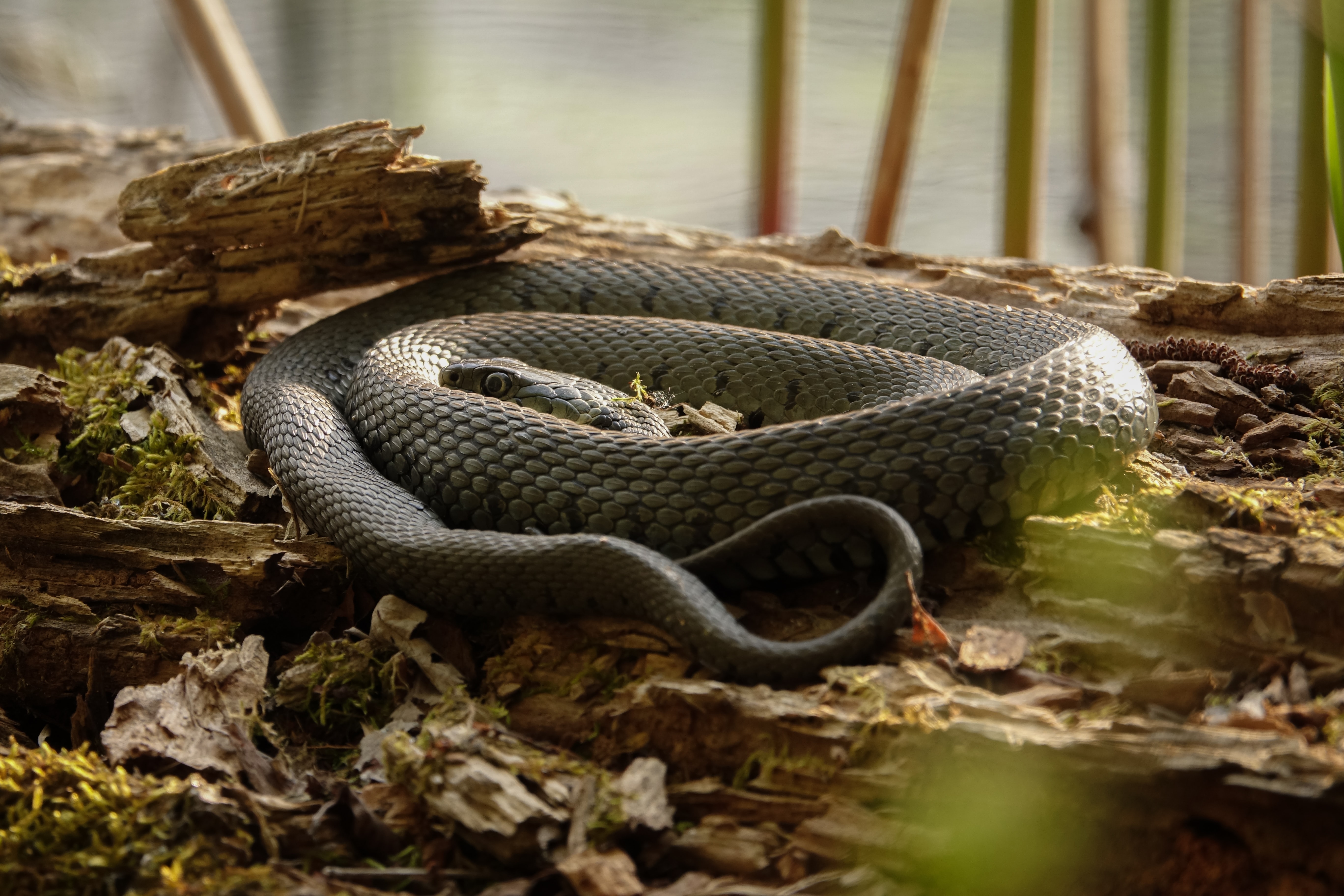
Are eggs or live young better?
If you want to live in very cold or very dry regions, live young are definitely better. In fact, it’s live-bearing snakes that venture the furthest from the equator in North America, Europe, and South America.
The most northern species in the world, the Adder (Vipera berus) is a live bearer, and has even been observed inside the Arctic Circle.
The reason for this is simple. A gravid female snake can move around to bask and keep her internally incubating babies warm through her behavior. So if she gives birth to live young, she can more easily unsure their proper development.
If on the other hand, she lays eggs, she has to rely on finding a warm incubation spot. This is harder the further from the equator you go.
So, if Grass Snakes hadn’t apadpted to seek out compost heaps, they probably would have been restricted to much warmer climate zones.

Grass snake bite
It is believed that grass snakes may strike someone with their head but they do not bite. Grass snakes themselves maintain distance from humans, as they like to stay isolated.
Personally, I’ve caught a lot of Barred and Iberian Grass Snakes over the years and I still haven’t had one strike at me. I have observed some pretty unusual defensive behaviors from them, though.
These include:
- Flattening their heads (presumably to look like vipers)
- Regurgitating
- Musking. Their musk has a horrendous smell that lasts for days.
- Playing dead
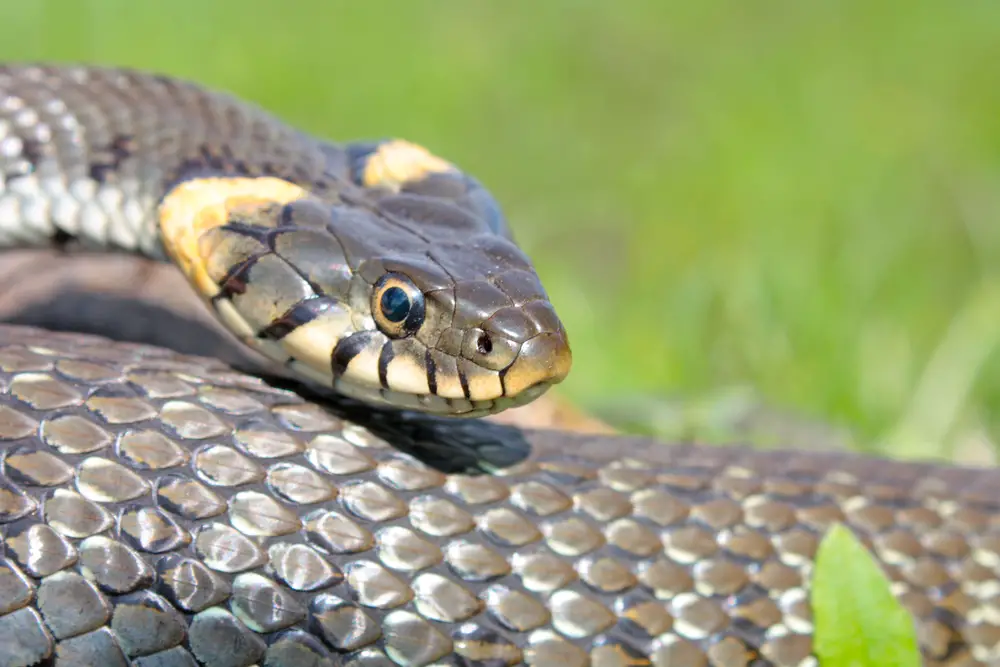
Are baby grass snakes poisonous?
Grass Snakes are non-venomous and completely harmless to humans. In fact, I would be much more afraid of them musking on you. Getting the smell off your hands can take some time, and you’ll pretty unpopular with anyone around you until you do.
Baby Grass Snakes aren’t poisonous either. Interestingly, they are capable of eating poisonous prey though. They eat Common Toads (Bufo bufo) on a regular basis, and seem to be completely immune to their poison.
FAQ relating to grass snake eggs
How long do grass snake eggs take to hatch?
Grass Snake eggs usually take around 8 to 10 weeks to hatch. The mother snake usually lays eggs in rotting vegetation like garden compost heaps which act as an incubator.
Later, around the month of September or October, these eggs hatch into small versions of the adults. In some areas they may be seen hunting and exploring, but if the weather turns cold they quickly go into brumation (hibernation) instead.
What do I do if I find a grass snake?
Grass Snakes are usually seen as harmless snakes to humans. They are natural predators of frogs and fish and often hunt near water. Occasionally, you might find one in your garden, or trying to get into your compost heap to lay its eggs. In either case, you should let the snake carry on about its business. They are harmless, and more importanly part of a healthy ecosystem.
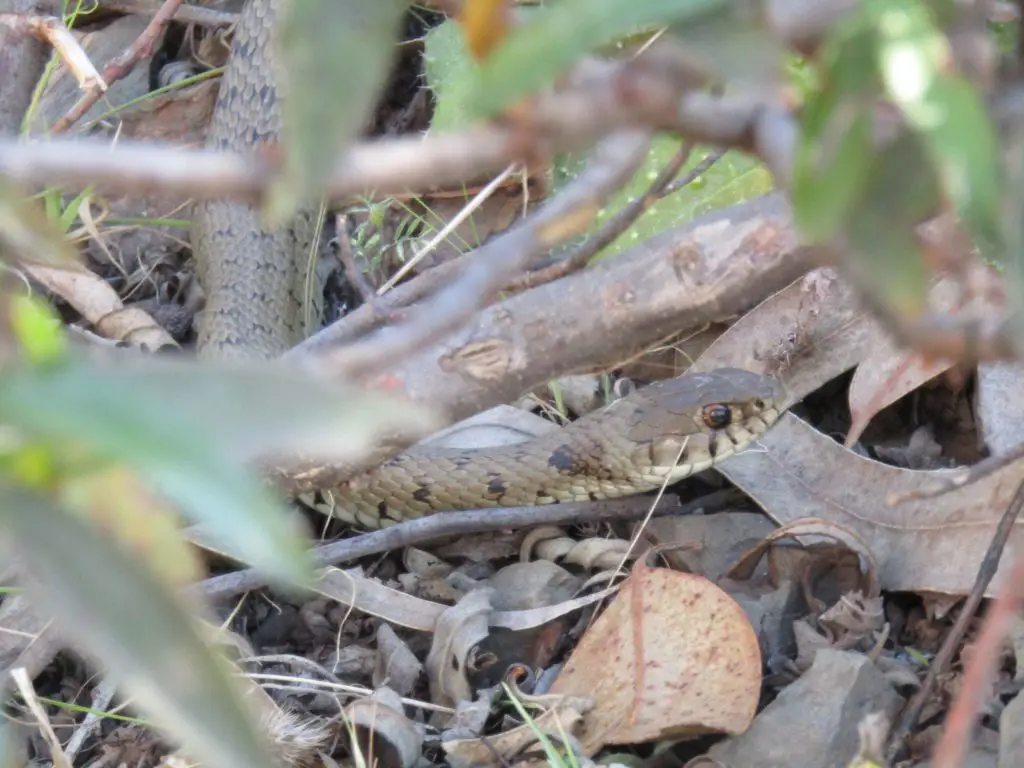
Are grass snakes scared of humans?
Snakes are usually more scared of humans than we are of them. Be it a venomous or a nonvenomous snake, both are extremely wary of humans.
They will only bite you to avoid any potential harm to themselves. This is their last step to avoid humans. Therefore, it is advisable to let snakes keep doing what they are doing and not interrupt them.
What time of day do grass snakes come out?
Grass snakes are shy creatures. They quickly retreat into cover if they detect a human around. The grass snakes usually come out of their habitat early in the morning, and bask or hunt for most of the day.
They can also be easily located near a water body where they come to hunt for small insects and fishes. That said, often you only get a quick glimpse of them as they dash into the grass or water.
Does cutting grass keep snakes away?
Yes, it is true that cutting grass keeps snakes away. Snakes are less likely to reside in short grass. This is because they can be easily seen by their predators or even humans. Their predators may include hawks and other birds. If the grass is short, it makes it easier to spot the snake.

